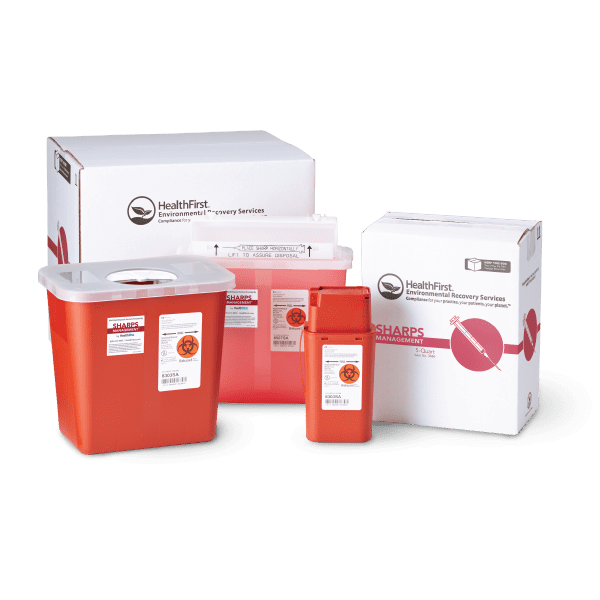Medical Waste Removal Excellence: Your Relied On Partner in Safe Biohazard Disposal
Wiki Article
Discovering Various Waste Disposal Options for a Cleanser Environment
In the search of a cleaner setting, the monitoring of waste disposal has actually arised as an important focal factor for sustainable development. With a multitude of waste disposal options readily available, ranging from traditional land fill techniques to innovative waste-to-energy modern technologies, the selection of just how we manage our waste has significant implications for our earth's health.Recycling Approaches
Applying efficient reusing techniques is vital in decreasing waste and promoting sustainability in our environment. Recycling entails the procedure of converting waste products right into reusable things to protect against unnecessary disposal.An additional essential recycling technique is composting, which entails disintegrating organic waste like food scraps and yard trimmings into nutrient-rich dirt. By integrating these numerous reusing techniques into our waste management practices, we can significantly decrease our environmental impact and move towards an extra sustainable future.

Composting Methods
Effective waste management techniques, such as reusing methods, pave the means for a cleaner setting, and now, moving the emphasis to 'Composting Techniques', we discover lasting methods to disintegrate natural waste for ecological benefit. medical waste disposal.Composting is an all-natural procedure that transforms organic waste, like food scraps and backyard trimmings, into a nutrient-rich dirt modification. The secret to successful composting hinges on creating the ideal balance of eco-friendly materials, such as vegetables and fruit scraps, and brown materials, like dried fallen leaves and twigs. These products disintegrate with the help of microorganisms, breaking down the waste into valuable garden compost.
There are numerous composting techniques readily available to match different needs. Conventional yard composting involves layering organic materials in a bin or heap and on a regular basis transforming the combination to aerate it. Vermicomposting, on the other hand, makes use of worms to break down organic matter into garden compost (click here). For those with minimal space, indoor composting systems supply a practical option. By utilizing composting methods, we can minimize the quantity of waste sent out to land fills while producing a helpful product for enriching dirt and sustaining plant development.
Incineration Cons and pros
Incineration, as a waste disposal approach, provides both benefits and negative aspects that warrant careful consideration in the realm of sustainable waste management methods. On the favorable side, incineration can considerably lower the volume of waste, minimizing the requirement for land fill room and potentially decreasing greenhouse gas exhausts.Additionally, the high preliminary investment and functional expenses of incineration facilities present financial challenges, making it a much less cost-effective choice compared to other waste management approaches. Cautious tracking and guideline are essential to reduce these adverse effects and make the most of the advantages of incineration as component of a comprehensive waste management strategy.
Land Fill Monitoring Strategies
Garbage dumps play an essential function in waste management and environmental conservation by providing a containment system for the disposal of solid waste products. By condensing the More hints waste, the volume is lowered, allowing for more waste to be accommodated over time.In addition, the application of day-to-day cover practices is vital in decreasing odors, avoiding trash, and minimizing the tourist attraction of parasites. Covering the disposed waste at the end of daily aids to contain smells and protect against prospective environmental contamination. In addition, the monitoring of garbage dump gas exhausts and leachate levels is critical in making certain that ecological criteria are satisfied and that any possible risks to surrounding communities are decreased.
Waste-to-Energy Technologies
One of the cutting-edge strategies to lose monitoring includes utilizing Waste-to-Energy technologies to convert strong waste right into functional power sources. Waste-to-Energy (WtE) innovations include a series of processes that intend to remove power from waste materials with thermal, chemical, or biological means. This conversion procedure not only minimizes the quantity of waste that winds up in land fills but additionally creates valuable energy resources such as electrical energy, warmth, or biofuels.There are several techniques of Waste-to-Energy conversion, consisting of incineration, gasification, and pyrolysis. Incineration includes melting waste at high temperatures to produce heat and electrical energy. Gasification converts waste into a syngas, which can be used for power generation or chemical production. Pyrolysis breaks down natural materials making use of heats in the absence of oxygen, producing bio-oil, gas, and char.
Executing Waste-to-Energy technologies can help reduce environmental problems related to typical waste disposal techniques while at the same time giving a renewable resource source. However, careful consideration needs to be offered to emissions control and guaranteeing the sustainability of feedstock materials for these modern technologies to be really helpful for a cleaner atmosphere.

Conclusion
To conclude, discovering various waste disposal choices such as recycling, composting, incineration, landfill monitoring, and waste-to-energy modern technologies is necessary for advertising a cleaner setting - click here. Each approach has its own advantages and obstacles, however by making use of a combination of these methods, we can function towards minimizing the amount of waste that ends up in landfills and inevitably add to a much more lasting future for generations to findWith a multitude of waste disposal alternatives readily available, varying from traditional land fill methods to innovative waste-to-energy modern technologies, the selection of how we handle our waste has far-ranging effects for our earth's wellness. medical waste disposal.Incineration, as a waste disposal approach, provides both advantages and negative aspects that warrant cautious consideration in the realm of sustainable waste administration methods.Landfills play an essential function in waste administration and ecological conservation by giving a containment system for the disposal of solid waste products. By condensing the waste, the quantity is minimized, enabling for more waste to be accommodated over time
One of the ingenious methods to squander administration involves taking advantage of Waste-to-Energy technologies to convert solid waste into useful power resources.
Report this wiki page